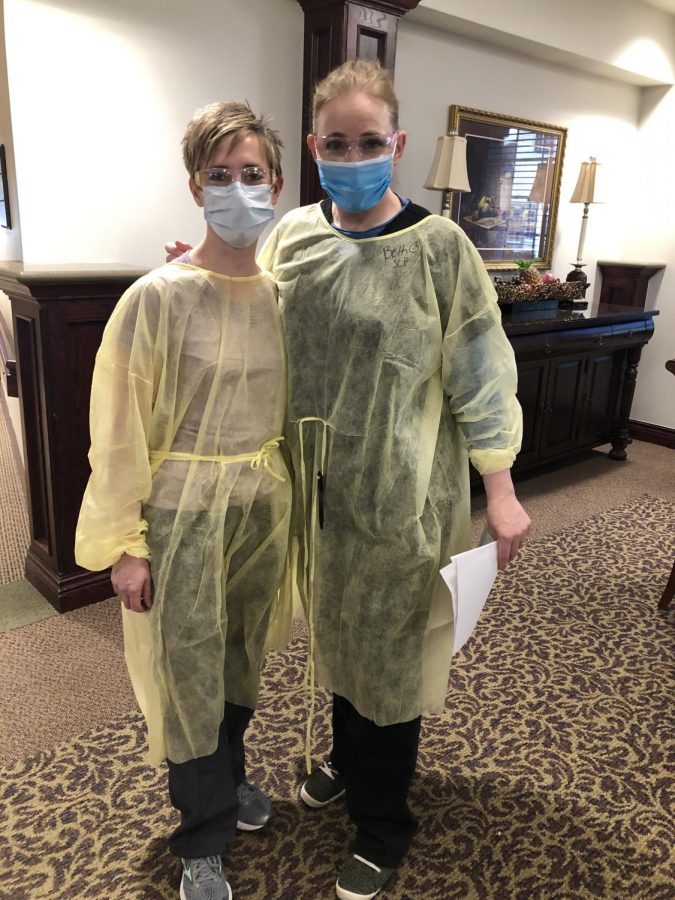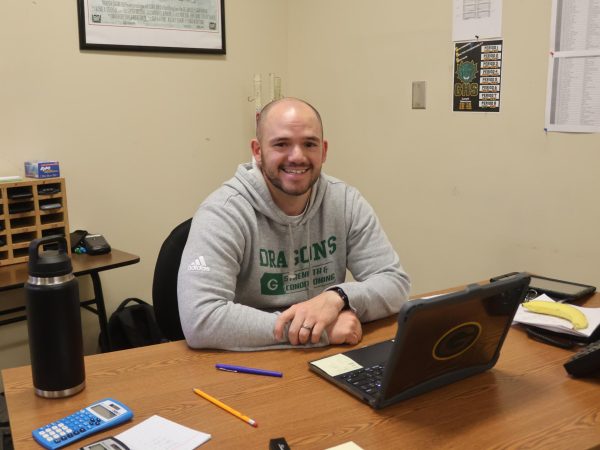A Look Into a Health Care Worker’s Life
Health Care Workers During the Pandemic
Gina Foltz and Beth Hopkins fully dressed in their personal protective equipment.
At many health care facilities around the United States, new protocols and procedures were put in place to help combat COVID-19. For occupational therapist, Ms. Gina Foltz, working at a skilled nursing facility has pulled her into the front lines of this pandemic and has changed her everyday working routine.
Foltz’s first introduction to the pandemic at her work was at the beginning of March. A rule was introduced that no visitors, family members, or volunteers were allowed to enter the building. The only people allowed in were the employees. A new protocol was put in place every day as they arrived at work there was a screening process. Workers’ temperatures were taken and any symptoms were recorded. If they passed both screenings, they were allowed to enter the building and start their day. As new patients arrived from the hospital, they were put into specific hallways in the west wing of the facility. Only certain people are allowed to be able to take care of these people and Ms. Foltz was chosen as one of them.
“I was chosen because all other occupational therapists during this unique time have either health issues, do not work full time or have elderly parents that live with them,” Ms. Foltz said. “I was scared to take the position at first, but I knew it was the right thing to do considering I’m one of the most healthy and qualified person.”
Ms. Foltz’s normal daily routine was changed. Instead of just wearing her normal scrubs, she also wears a disposable paper gown, mask, goggles and gloves. The mask and goggles made for a hard workday. Along with different attire, new therapy techniques are used. These changes make it hard for her regular treatments and exercises.
“I have to keep reminding myself to not get too close to them and to avoid touching them,” Foltz said, “This is hard to do as a therapist because we are so hands-on with our patients, and we are usually near them to assist with wheelchair transfers or self-care needs, we don’t do this tasks nearly as much as we used to. The amount of time I can spend with them is different and how personal I can get with them has changed, conversation wise, due to wearing masks that make your face hot and uncomfortable.”
Even through these trying times, Ms. Foltz plans to continue working hard, and she hopes everyone will persevere through these hard times. Professionally, Foltz left with these important messages about social distancing and COVID-19.
“Remember to stay home and wash your hands!” Foltz said, “I am so fearful of this virus and its effects. I want to make sure me, my patients, coworkers, my family and everyone stays safe during this time.”

Mara Bosworth is a sophomore at GHS and this is her first year on the GNN staff. She serves as a staff reporter. She enjoys journalism because it gives...







